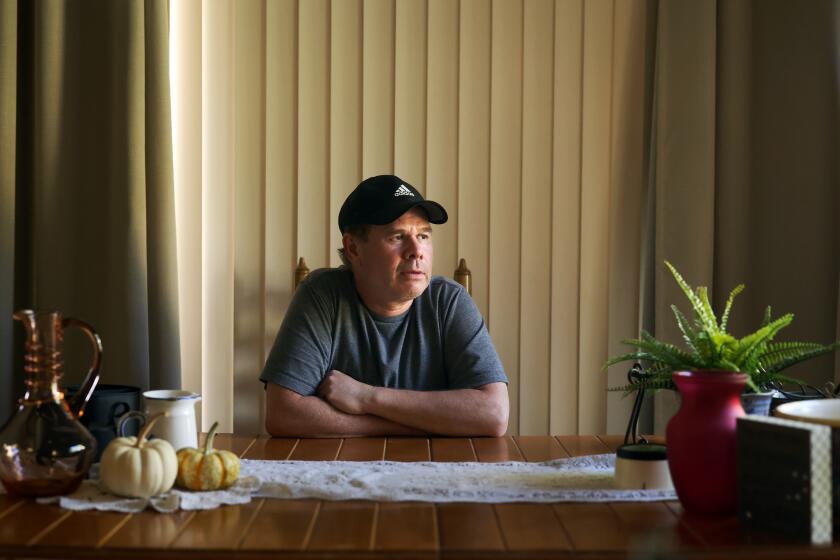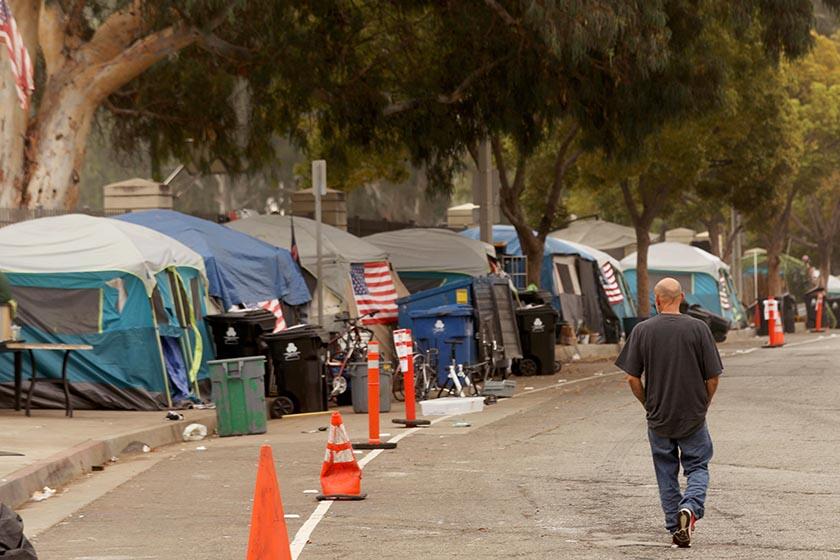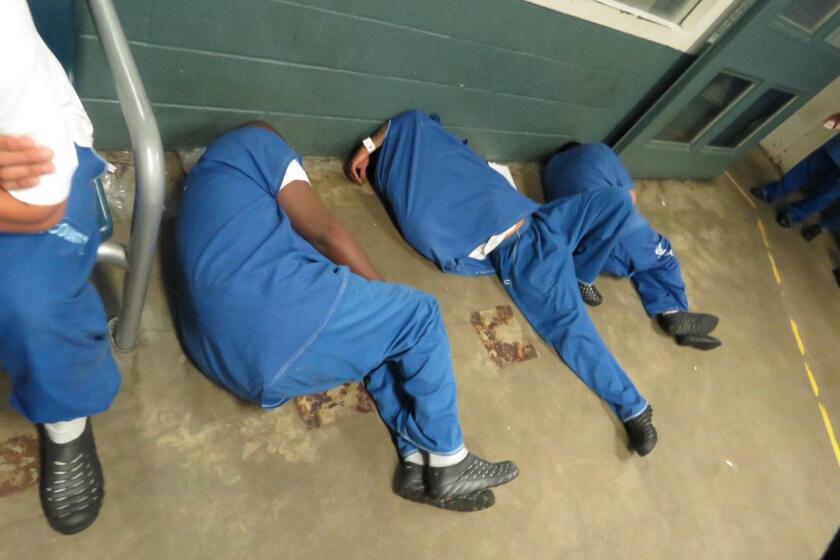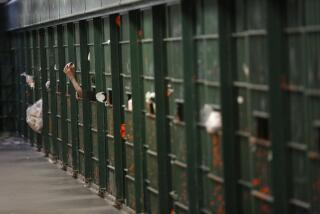Jail and prison will never be places a person with mental illness finds healing
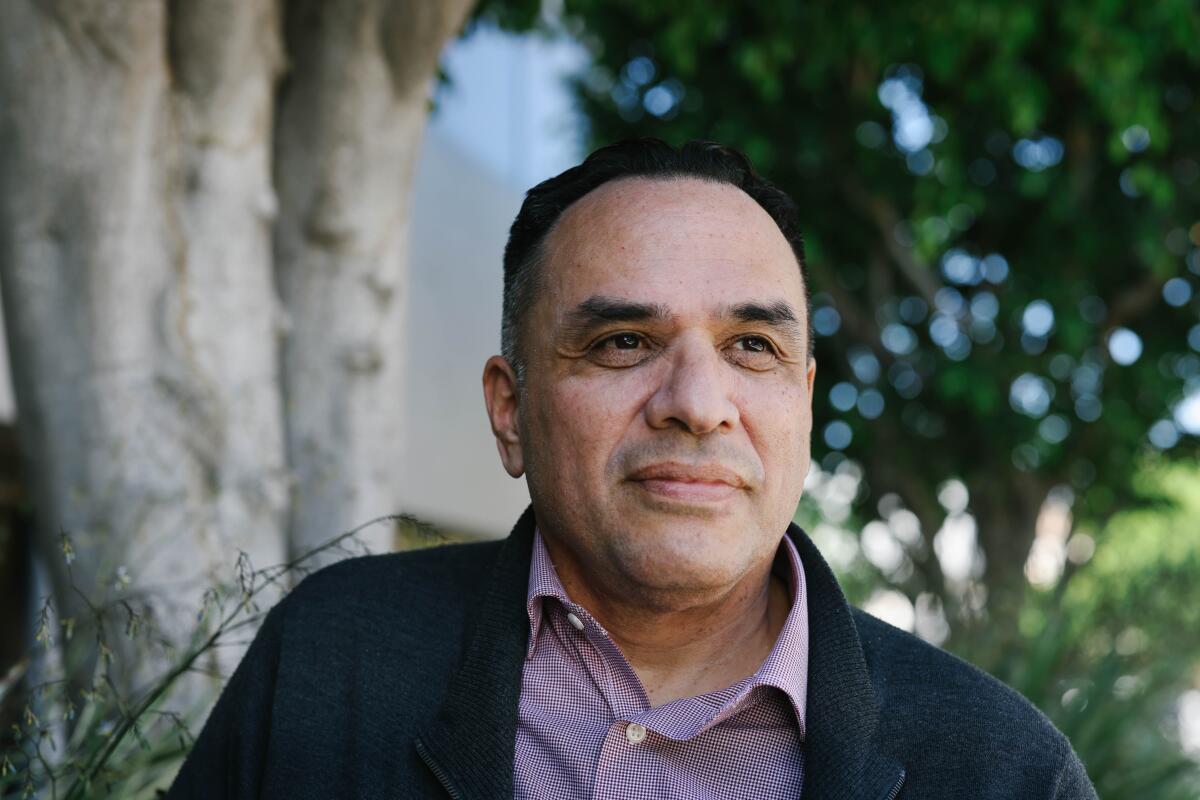
- Share via
Twenty-five years ago, while serving time in a California prison for a parole violation, I was talking to a forensic psychologist when I began to feel a sense of hope.
I sensed that this psychologist understood me. I shared my actual feelings with her and was vulnerable, the first time I’d really done that with a mental health professional.
In one of our sessions, she told me the reason I was in prison was not because I was a criminal. It was because I had a problem with alcohol and suffered from clinical depression. To reinforce her statement, she encouraged me with a quote from Led Zeppelin’s “Stairway To Heaven.”
“Yes, there are two paths you can go by, but in the long run,” she said, repeating a line from the song, “there’s still time to change the road you’re on.”
That was one of many “miracle moments,” as I call them, that led me out of the state carceral system and began a path of transformation.
The Times is publishing a series of personal essays by people who have all taken different approaches to mental health challenges.
That time in prison was my last — Sept. 25, 1997, my 29th birthday. I was so scared.
Each time I left prison or the Los Angeles County jail, I had a desire to succeed. Like in 1995, just before being sent back to prison a second time, I earned my high school diploma while in county jail. I remember feeling proud that day. At 27, I finally accomplished a societal rite of passage.
Here I was, leaving prison for the third time. What was going to be different this time? I was terrified of whether it was too late, of what my life had become. I felt I was becoming institutionalized and struggled to fight off the attitude of not caring whether I returned to prison or jail. But, deep down in my heart, I felt this was not the life I was called to live.
How To Save A Life
Pandemic stress, traumatic events and economic uncertainty have upended our world. This series aims to make the cascade of threats to your mental health a little easier to manage.
I’d grown up in a stable family with supportive parents. My dad worked as a probation officer and completed law school but never practiced. My mother was an accounting clerk. We lived in a house with a pool in unincorporated Whittier. My two younger sisters and I often went to Dodgers games with our grandparents. As a kid, I dreamt of becoming an architect.
However, during my middle school years, I was severely bullied, dark memories that are hard to recall and something I never shared with my parents. Instead, I acted out, demanding material things to mask my inner pain.
My transition into adulthood was not any easier. I was angry, fearful and stuck in a silent, deep despair. Alcohol became my coping mechanism, exacerbating my untreated depression and anxiety.
Alcohol, as many of us know, is a socially accepted way to deal with negative emotions — until something happens that separates you from social drinkers. For me, that began at 18 when I started racking up arrests. I also began an on-again, off-again unhealthy relationship that ended only after she died unexpectedly in 2004.
My parents saw what was happening and did their best to help, encouraging me to get counseling and other support. I sought out mental health and substance-abuse help from my father’s private insurance provider several times. However, in the mid-’80s, getting treatment for a mental health condition and an alcohol problem at the same time was not an option. My insurance provider would not allow me to see a mental health therapist until my alcohol abuse was treated’
But eventually I fell through my parents’ private insurance safety net as my mental health and alcohol abuse spiraled. At 22, I was sentenced to the California state prison system for three years after accepting a plea deal on an assault with a deadly weapon charge. I’d gotten into a drunken fight, and trying to protect myself, was ultimately charged. It’s still hard for me to believe who I was back then.
Seeking access to mental health care in jail and prison wasn’t (and isn’t) easy.
Hundreds of mentally ill detainees incarcerated across California in recent years have languished in jail long after being declared incompetent to stand trial.
During one of my (numerous) county jail incarcerations, my late father, Luis A. Garcia, was the only reason I received care. He called the jail psychiatrist to ensure my psychiatric medicine was special-ordered because it was not in the jail pharmacy’s formulary. Most aren’t so lucky to have such an advocate.
Later, when I landed my first state prison incarceration in 1991, I naively asked for mental health help at the reception center. I was offered an assessment to determine if I needed help. But after waiting nearly six months and with no appointment in sight, I declined the assessment. I was transferred to another facility, where I was assigned to work as a clerk. My time in that job, though, ended when a gang member attacked me, nearly cutting my ear off in an attempt to, in prison parlance, “tax me,” trying to demand my family send him a package. I was a kid who didn’t fight back because I knew I’d lose my release date. I was full of fear. I felt like my heart was going to explode. (Prison staff wanted me to press charges, but it was not safe.)
For my own safety, I was transferred, but still received no mental health care.
I cycled in and out of the carceral system for years, suffering from serious mental illness and a substance-use disorder, and getting no support. It was nearly impossible to get care inside jail and prison to address the things at the heart of my convictions.
My only saving grace was when I broke down in front of the forensic psychologist, pleading for help. I began therapy with her, got medication from the prison psychiatrist, and was placed in group therapy with the prison’s clinical social worker. This care team laid the foundation for me to continue to feel that I could change my life trajectory for the better.
In L.A. County, CARE Court will be implemented next year. Here’s how you can access it.
For people who have experienced the dehumanizing, traumatizing world of jails and prisons, the path toward healing and a life of recovery can feel daunting, if not terrifying.
It takes tremendous courage to confront our personal traumas. But I’m here to assure you that there is hope. And if you take nothing else from this piece, know this: Recovery is possible.
When I returned to the community, I restarted my education. After completing enough courses at my local community college, I transferred to Loyola Marymount University, graduating with a theology degree in 2001. Then off to graduate school at USC.
This period was not easy. Despite my success in school, I was still silently struggling with my alcoholism, which exacerbated my depression. After losing my longtime on-again, off-again girlfriend in 2004, I spiraled into my alcoholism. Another miracle moment happened, though, when I made the decision to stop drinking once and for all.
How? I went to stay at my parents’ home and quit cold turkey. I felt like I was going to die. A therapist had suggested I try AA, and I’d told her, “Those are a bunch of weirdos.” Already tried it. Didn’t work.
But at my parents’ house, I had a copy of “Alcoholics Anonymous,” known more commonly as the “Big Book.” I realized I was way off base about the program. I learned how AA’s co-founder, Bill, had been helped by a Jesuit priest, and having attended a Jesuit university, this really connected with me. I went back and listened, and from there, was helped by so many wonderful and giving sober people.
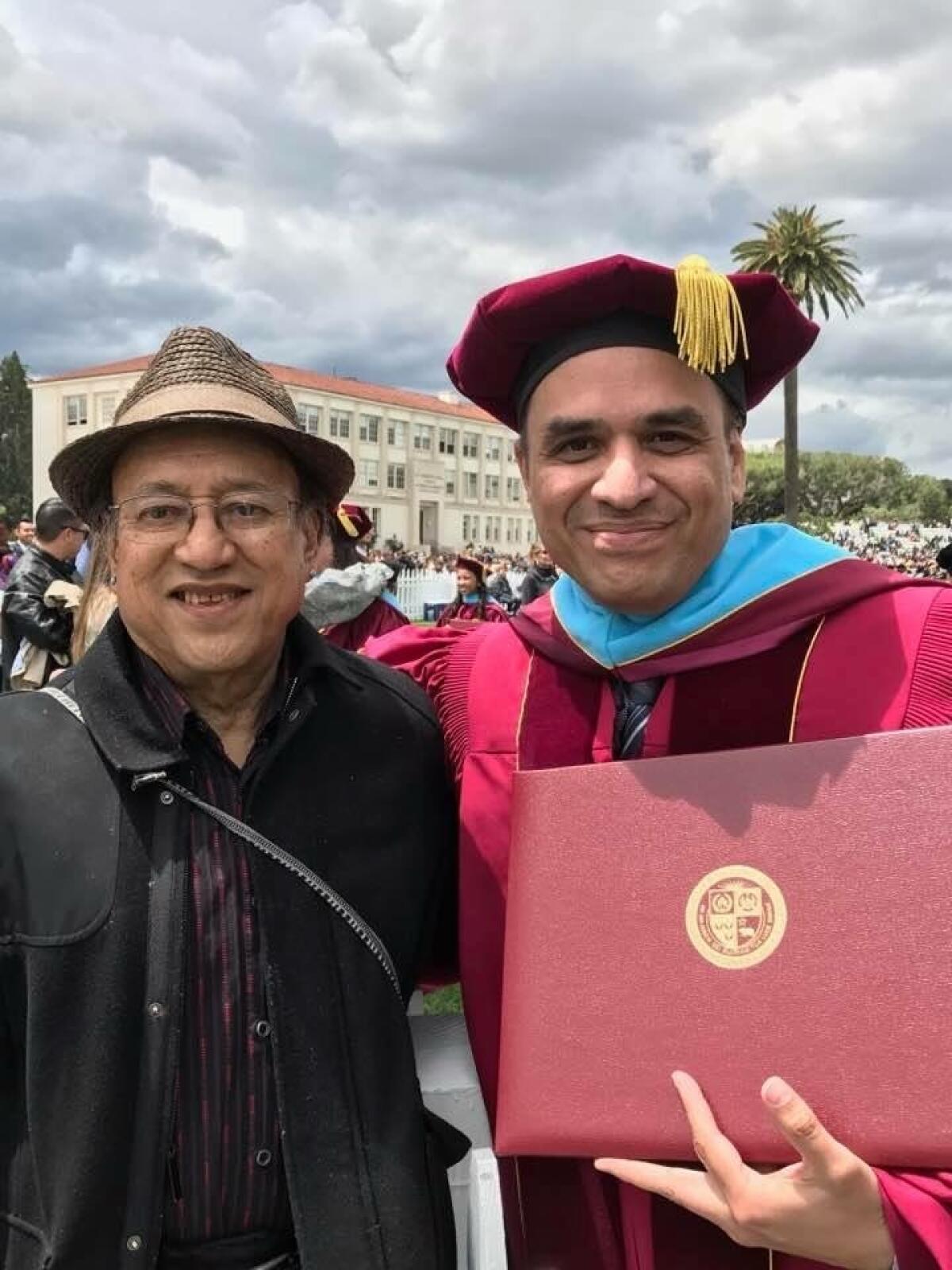
Sobriety granted me the stability and mental clarity to complete my master of social work from USC in 2007 and get my doctorate in education from Loyola in 2017, 20 years after I’d left prison. I’m not telling you about my post-prison accomplishments to show off my resume. I’m telling you this because I want you to think about the thousands of young men in California prisons today who aren’t getting the same level of care that I begged for 20 years ago. Recent reports reveal access to mental health care in California’s state prison system continues to fall short.
Here in Los Angeles County, the county jail system warehouses almost 6,000 men and women with mental health needs. The county remains woefully out of compliance more than six years after the Sheriff’s Department reached a settlement with the federal government to improve mental health service delivery in the jails. It’s an issue that’s been well-documented by the federal government in two decades’ worth of reports.
L.A. County jail inmates are left to defecate in garbage cans and sleep chained to chairs or benches, ACLU alleges in demand for an emergency court order
I wonder if access to quality, humane mental health care in the carceral setting can ever be achieved. I wonder if the care I received during my last imprisonment, the care that saved my life, would be a fluke now.
Nationwide, the number of incarcerated people in the United States with mental illness remains inexcusably high. An estimated 50% of those in federal and state prisons are in need of mental health treatment, with county jails hovering about 40%. Our correctional systems often are called the de facto provider of mental health treatment — but that characterization suggests people actually get care in carceral settings.
Everyone who needs mental health services deserves access to quality, humane treatment, especially those who are incarcerated or who are returning home. It saved my life, and I know it can save many more, when actually available.
Today, my life is full and satisfying. I work as a statewide behavioral mental health consultant, helping public and private mental health and substance-abuse providers to improve California’s behavioral health system infrastructure. I volunteer as an associate clinical social worker, where I specialize in working with people with mild to moderate mental illness. I will be licensed next year. I have a loving partner whom I get to share my life with, along with her two boys, now high school age, and our husky, Beasley. And I continue to remain active in my recovery community.
I feel I am now living the life I was called to live. That’s a miracle.
More to Read
Sign up for Essential California
The most important California stories and recommendations in your inbox every morning.
You may occasionally receive promotional content from the Los Angeles Times.


